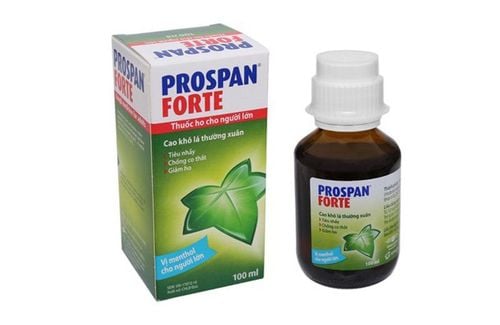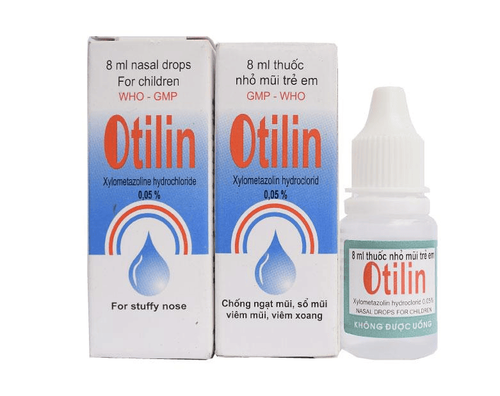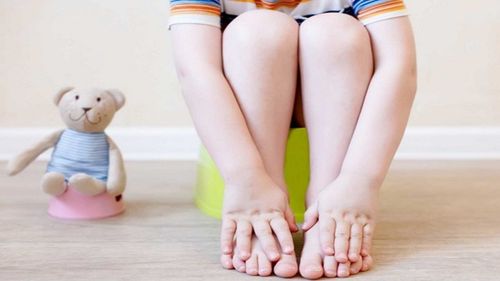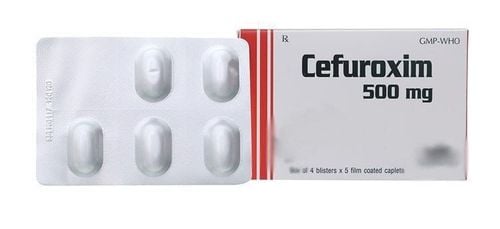This is an automatically translated article.
The article is professionally consulted by Master, Doctor Ngo Thi Oanh - Pediatrician - Pediatrics - Neonatology - Vinmec Ha Long International General Hospital.
Upper respiratory tract infections are common in infants and young children. Early detection of the disease through signs of upper respiratory tract infection will help parents take care of their children and take them to the doctor for timely treatment, minimizing the risk of complications.
1. The role of the respiratory tract
The respiratory system starts from the anterior nasopharynx to the alveoli inside the lungs. The upper respiratory tract includes organs such as the nose, pharynx, pharynx, sinuses, and larynx.
These organs are responsible for taking in outside air, humidifying, heating and filtering it before it enters the lungs. Because of the direct exposure to the air, the organs in the upper respiratory tract are very susceptible to adverse environmental conditions and cause inflammation.
2. What is upper respiratory tract infection in infants and children?
Upper respiratory tract infection is a collection of many different diseases in young children such as colds, tonsillitis, nasopharyngitis, VA, laryngitis, otitis media,...
Infants and young children are very susceptible to upper respiratory tract infections. On average, each child can get sick 5-8 times a year and the most susceptible time is during the cold season or when the season changes.
In addition, children are also susceptible to diseases if the living environment is polluted; contact with sick people carrying bacteria, viruses; have bad living habits (open the air conditioner too cold, let the fan blow directly to the face or body,...).
Upper respiratory tract infections are usually not serious and can be cared for at home by parents. However, there are still cases where the upper respiratory tract infection spreads to the lower respiratory tract or becomes chronic. At this time, it is necessary to take the child to medical centers for diagnosis and treatment.

Viêm tai giữa ở trẻ là một trong những nguyên nhân gây viêm đường hô hấp trên
3. How to identify upper respiratory tract infection in infants and children
Based on the signs of upper respiratory infection, parents can determine whether the child has the disease or not. The typical symptoms of the patient are:
Runny or stuffy nose; Sore throat, hoarseness; Cough, dry cough, with or without phlegm; Sneezing, wheezing; Red, itchy, sore and watery eyes; Chills, low fever (38.5°C or higher) for 1 - 3 days; Fatigue, irritability, fussiness, quit feeding; Headache, muscle and joint pain; The above symptoms do not appear at the same time, it can appear separately. For children with only mild upper respiratory tract infections, symptoms only include a runny nose, stuffy nose,... But when a child has a fever, the disease is already more severe, the immune system is actively destroying the microorganisms that cause it. sick.
Children with upper respiratory tract infections, if not promptly treated, will easily lead to lower respiratory tract infections such as bronchiolitis, bronchitis, pneumonia,... Superinfection leads to other diseases, serious complications can cause death due to complications of heart inflammation, glomerulonephritis, meningitis, acute rheumatic fever,...
Therefore, parents need to closely monitor the child's disease progress for early detection and treatment. Children go to hospital as soon as they show signs of worsening illness as follows:
The child cannot drink water, sucks little or stops breastfeeding; The disease shows no signs of remission; Children with shortness of breath, rapid breathing (over 50 times/minute), chest indrawing; High fever continuously for 3-5 days.
4. How to take care of a child with an upper respiratory infection
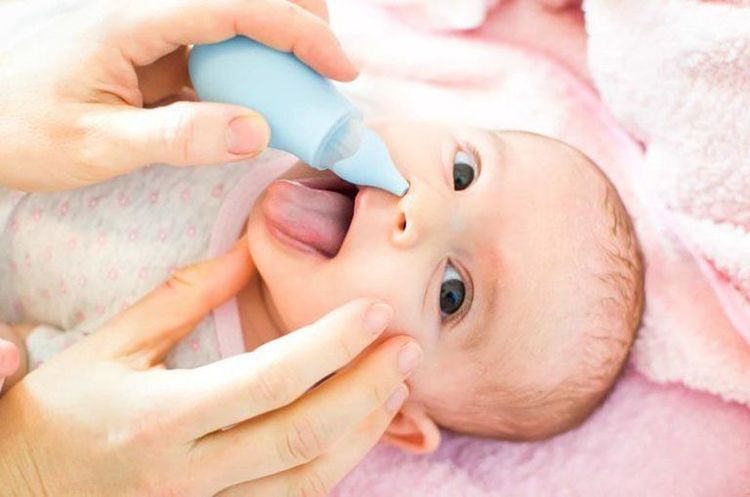
Vệ sinh mũi cho trẻ giúp thông thoáng đường thở
Normally, the time from onset of illness to recovery of a child's illness is about 2 weeks. Parents just need to pay attention to properly care for their children and pay attention to the following issues:
When a child has a fever of 37.5 - 38.5°C, parents should give the child plenty of water to drink, feed more, cool off, wear clothes. little clothes. Children's fever-reducing medicine (prescribed by a doctor) can be used if the child has a high fever of 38.5°C or higher; When a child has a runny nose, causing stuffy or blocked nose, parents can clean the baby's nose by: Using a soft and dry towel to wipe the nose; Drop the nose with 0.9% physiological saline and then suck the mucus in the nose, but avoid abuse; If the child has nausea and vomiting, does not eat well due to the accumulation of phlegm and drool in the throat, parents should feed the child more, eat liquid and easy to swallow foods such as porridge, soup. At the same time, the child should eat little by little to avoid vomiting or choking;
During a child's illness, avoid letting the air in the baby's room get too dry. Parents should turn on the air conditioner (adjust the room temperature to about 25 - 26°C), open the windows slightly or use a humidifier for the room. At the same time, do not let the fan blow directly into the child's mouth, nose or neck; Feed your baby enough times during the day, eat enough nutrients to ensure nutrition. Mothers need to pay attention to hygiene, store breast milk properly, avoid infection; Children need to be kept warm, avoid exposure to cold air, wind, dust, smoke,...; When taking care of children, parents need to monitor symptoms when the disease worsens such as wheezing, stridor, severe cough, chest tightness, etc. to promptly handle. The above symptoms occur when the disease has affected the lower respiratory tract, causing bronchiolitis, bronchitis or pneumonia.
Some drugs can be used in case of necessity to relieve pain and fever for infants and young children with upper respiratory tract infections, including:
Acetaminophen (paracetamol): found in pain relievers, antipyretic common fever such as Hapacol, Efferalgan,... Parents need to buy the right medicine, the right dose according to the baby's weight; Ibuprofen: A popular anti-inflammatory drug that helps reduce swelling, pain, and fever; Cough medicine and antibiotics: Use only when prescribed by a doctor. Note: Before using any medicine for children, it is necessary to have a prescription and consult a doctor before giving it to children. Absolutely, do not use arbitrary.
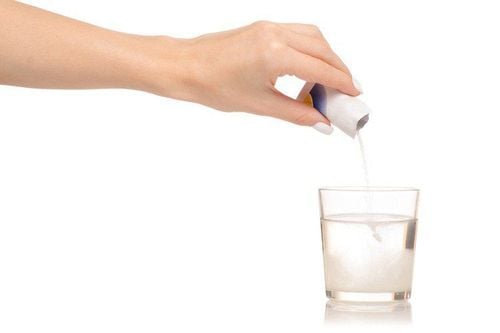
Khi pha thuốc cho trẻ, cha mẹ cần lưu ý sử dụng đúng liều lượng
4. How to prevent upper respiratory infections in babies and children
Keep children warm when the weather turns cold, limit children going out to play in the evening or early morning. If children go out to play when it's cold, they should be fully equipped with socks, gloves, hats, coats, scarves, etc. to keep warm; Breastfeed exclusively for the first 6 months of life and, if possible, continue breastfeeding until 2 years of age; Give children solid foods at the right time with a reasonable diet, add vegetables and fruits to the menu to strengthen their resistance; Keep children's hygiene, clean their nose and throat daily and ensure a fresh and clean living environment; Do not let children eat or drink cold drinks; Fully immunize children, especially flu vaccines and vaccines against pneumococcal disease.
Upper respiratory tract infections in infants and young children can cause many dangerous complications. Therefore, when a child has an illness, parents should take the child to a doctor to assess the extent of the disease, choose appropriate care, follow-up and treatment.
In addition, in order to prevent upper respiratory tract infections in children, parents should pay attention to nutrition to improve the child's resistance. At the same time, add supporting foods containing lysine, essential micro-minerals and vitamins such as zinc, chromium, selenium, B vitamins,... snacks and less digestive problems.
Parents can learn more:
Why do you need to supplement Lysine for your baby?
The role of zinc - Guidelines for reasonable zinc supplementation
Please visit the website Vinmec.com regularly and update useful information to take care of your baby and family.




